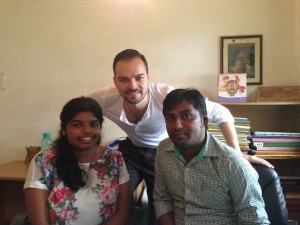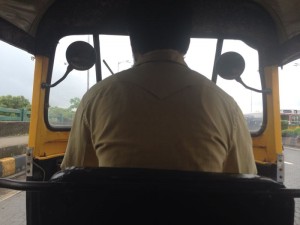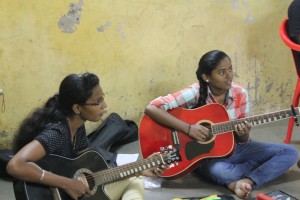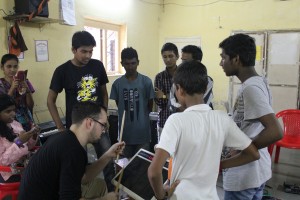By TOMAS URIBE, 8/12/2014. Even though the jet lag has finally caught up with me, every detail from Mumbai boosts the adrenaline. Yesterday was a very exciting day. I met the staff at Mewsic. Andres (program manager), Astrid (programming assistant), Elise (Head of Programming), Nandita (director), among other interns and technical assistants. We talked mainly about the impressions I’ve had while staying in Mumbai, the cultural differences with Colombia and the US. After the introductions, we got into the details of the itinerary and the plans we’ve been talking about over the past few months. Most importantly, we figured out how to divide the time strategically, in order to cover as much as possible, taking into account that getting acquainted with the children in their own communities can take time, developing their trust and comfort around us. We decided on going this week to Dharavi and Govandi (two of the major slums in Mumbai and the world), meet the children and their tutors, and establish some sort of ‘music connection’ with them.
Today, we started the journey to Dharavi around 11:30 in the morning. Apparently, getting a taxi cab all the way to Dharavi is a bit tricky, since most taxis will not take anyone due to increased traffic jams and the fact that little to no customers will take the taxi back into town. We hopped on an auto rickshaw and soundtracked by the almost musical horns and honking, we arrived to the borderline of the Dharavi slum, where a few taxi cabs are waiting. Even then it was hard to find one that would agree on taking us. After much traffic, congestion, and raindrops, we arrived at the maze-like entrance of one of the sections of Dharavi, where the Mewsic centre is located. At first, it seems as if we were going inside closed pathways, but the more you delve into the concrete walls, the more spaces you find. Finally, at the music centre, all was good among the language of music. No more honking, no more chaos, just organised sound.
We met with Mahesh, one of the music tutors at the centre. Around 8-10 kids came to this first session. We shared a few tunes, playing Indian classic music (apparently, they are fond of the Bollywood traditional item numbers), and I even jammed along with some improvisation on the Roland SP-10 (an Octapad, with percussion and drum MIDI sounds). I taught both a student and the tutor some basic rock and pop rhythms on the Octapad, teaching them how to control the device, change sound parameters, and vary the effects of each sound.
On our return, we focused on the planning for the actual filming and based on the impressions from today, we started developing more precise questions to ask the children (from Dharavi and Govandi) for the documentary. The questionnaire is a work in progress and will eventually have its final version by the end of the week, after we visit Govandi. Overall, today’s experience was unique and memorable. Even though the language barrier is evident, music has definitely no barrier. In fact, it is limitless and powerful. Seeing how these children enjoy music a couple of hours everyday, is a clear testament of the importance of music in people’s lives. It empowers and enriches our day-to-day activities.




